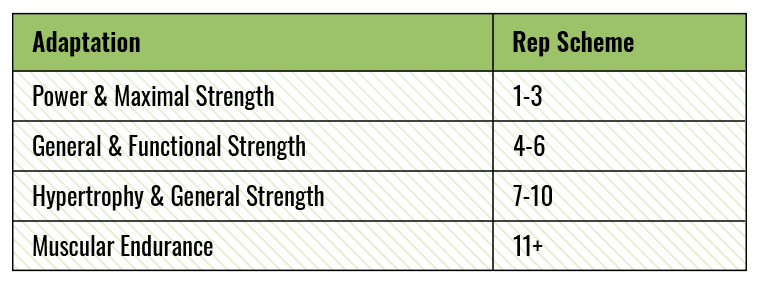
Want to create your own workout plan? Our guide walks you through every step of the process.
Written by Jake Boly Updated by Alex Polish, ACE CPT on August 1st, 2024 Expert Verified By: Jake Dickson, CPT-NASM, USAW-L2Whether you’re heading back to the gym after a long period away or you’re braving the weight room for the first time, figuring out what actually to do once you hit the gym can be daunting. That personal trainer you worked with a few years ago had you do awesome exercises, but now that you’re striking out on your own, you might have no idea how to build your own workout plan without someone else telling you what to do.

The good news is, as long as you know what your goals are and some weight training basics, you’ll be good to get started in the gym — be it a commercial gym or your personal home gym. This guide will help you figure out your workout goals and translate them into your first workout plan. You’ll also get a four-week training program template that you can modify as desired to fit your own goals.
When you’re starting your first training program — regardless of your experience level — it’s going to be most effective if you’re clear about your goals from the jump. You might be looking to build muscle, or you may be on the hunt for maximum strength. Your goals might also be related to cardiovascular endurance, weight loss, or a combination of multiple goals.

For those who want to build muscle, accessory exercises are as important as compound lifts. Above are examples of upper body and lower body accessory movements.
Different athletes and strength sports will require different accessory lifts, but when you’re just starting out, it’s important to get a broad understanding of what moves are available to you.
In short: After your dynamic warm-up, start each workout with compound exercises to bolster strength and recruit the most muscles. Yes, do this even if your main goal is building maximum muscle mass.
Complete your workout with accessory movements to support your strength gains and isolate smaller muscles. When you want to build muscle or if you simply enjoy variety, you can plan to incorporate more accessory exercises.
Below are two examples of how you may structure a strength-focused and muscle hypertrophy-focused workout (sets and reps are not included, but they will be discussed below).
Repetitions — or reps as they’re commonly called — are the number of times you perform a certain exercise. A set is how many times you do those repetitions. So, if a program tells you to do three sets of 10 reps for biceps curls, you’ll curl the weight 10 times, rest, and repeat two more times.

Certain goals require specific rep ranges. For strength, a lower rep range allows you to lift heavier weight. For muscle growth, working in the six to 12 rep range can yield enough time under tension to grow your muscles. Go much higher than that and expect to be looking at more endurance-oriented gains. Check out our rep chart above.
It’s not all about how many reps you do, though. Rest is an important factor in a well-designed program and can also be used as a training tool. You can use rest times as a way to track progressive overload when working towards a goal.
For example, resting less in between sets can help increase your muscular endurance. Keep tabs on your rest times to track how much better you’re getting over time.
There are multiple ways to assess how long you should rest, but the general rest times below are a good rule of thumb. These ranges will coincide with how the body’s energy systems will respond to various movements and intensities, along with giving them adequate time to recover.
It doesn’t make you cooler to rest for shorter amounts of time, and it doesn’t make you less fit to rest for longer amounts of time. If you’re using very heavy weights with compound movements, let your body recover accordingly between sets.
[Read More: The Best Post-Workout Supplements For Muscle Recovery, Mass Gain, And More]
When you’re using lighter weights with accessory movements, challenge yourself to stick to the quick rest periods if you can. Three to four sets are generally good to start with when you’re first beginning a program, and those rest periods will add up — so make sure you’re accounting for rest time when you’re planning out your gym time.
You have a goal in mind, a workout split laid out, and your exercises are chosen along with set and rep schemes for each. That’s great. But now you need to ensure that you’re progressing workout to workout — otherwise, you’ll stay stagnant. Enter progressive overload — the method of making your workouts slightly more challenging each session.
There are multiple ways to progress, but the two most common are increasing the reps and/or weight you’re lifting.

Once you understand different movements and variables that construct a sound program, it’s time to begin building: AKA, the fun part.
Full disclosure: this article is intended to help an athlete build a basic workout template and will most likely not be the best bet for those heavily involved in a specific strength sport like CrossFit or strongman.
Still, the skills you learn here can be scaled and translated into more sports-specific training regimens.
When you’re planning out or periodizing your program, there are three cycles (also called blocks) to break down training timelines. These are a microcycle (smallest), a mesocycle (middle), and a macrocycle (overview).
Coaches will use these timelines, cycles, or blocks to help dictate their workouts per an athlete’s needs, goals, and sport. That said, it’s good to have a solid understanding of what all this means and how to use it for yourself. Check out the visual example below.

There are multiple types of periodization programs, but beginners are often served best by a linear model. This model will support consistent calculated growth over a gradual period of time.
The example program outlined below will be a month-long mesocycle with a program that corresponds to the linear periodization model. Basically, it’s four weeks of workouts, with each workout containing a slight progressive overload on each of your movements.
Here, you’ll find a skeleton training program template that will have you training three times a week. You can add a day if you’d like, and if you choose to do so, you might want to look into working with an upper/lower split.
Directions: All exercises should be performed one at a time. However, exercises marked with the same letter (“C1” and “C2”) should be performed back-to-back without rest as a superset. Your goal is to hit the sets and reps as listed, adjusting your weights as needed if you’re finding this way too easy or way too hard. Also, be sure to rest one day between training days.
Note: You’ll notice that there are no exercises listed below. That’s by design. It’s up to you to choose the best exercises based on your training goals. This template lets you know where to plug in compound and accessory movements and gives you set and reps, but that’s it. Consider this homework — but homework that’ll get you jacked.
There are a million ways to get from point A to point B in the world of strength training. There’s never a one-size-fits-all methodology. What’s most important is understanding the “why” when you’re in the gym. By sizing up your goals and programming exercises and intensities to match, you’ll be well on your way to gym happiness.
Featured Image: Prostock-studio / Shutterstock
Jake holds a Master's in Sports Science and a Bachelor's in Exercise Science. Jake formerly served as BarBend's Fitness and Training Editor.